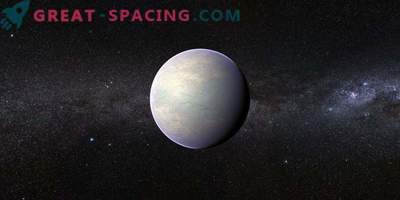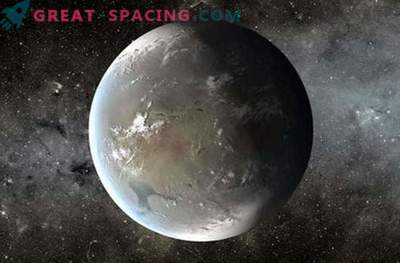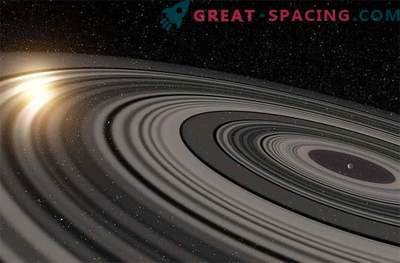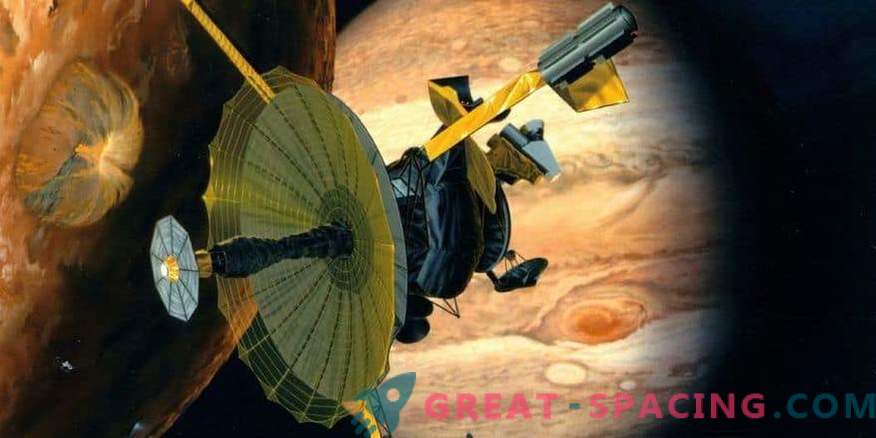
Galileo near the satellite of Jupiter Io. The vehicle arrived on the planet on December 7, 1995, and landed on September 21, 2003. The picture shows that the antenna is fully deployed, although, in fact, it never happened.
On December 8, 1990, the Galileo spacecraft launched from Earth to Jupiter. He distanced himself by 960 km, retaining his instruments in integrity, and maintained constant contact. He collected data, including our planet.
But what could he catch from such a distance? Was life, vegetation, signs of mind visible? These questions were raised in 1993 by Karl Sagan. The results showed that the device recorded a huge amount of information confirming life on our planet. So, any other form, if it passes at a sufficient distance, it will notice the same.
There was a lot of information: copious amounts of surface water, oxygen, methane, ozone, radio signals, and so on. But Sagan focused on the powerful reflection of near-infrared color in the terrestrial spectrum. “Red edge” indicates the presence of “light-receiving pigment in the photosynthetic system”. In other words, we received a signature of vegetation. That is, probes like Galileo should easily find all these signs on other objects, if they are, of course.
But here it was about kilometers, and we plan to explore objects that are distant for light years. Would it be possible to notice the red edge in such conditions? Scientists are interested in answering this question.

Pilar Montanes-Rodriguez from the “Big Bear” Solar Observatory
When you are looking for planets with signs of life, it is important to understand what to look for. Pilar Montanes-Rodriguez focuses on the presence of atmospheric gases. It is necessary to identify combinations like oxygen and methane, oxygen and water, ozone and carbon dioxide. But this only indicates the presence of microbial forms that existed on our planet for billions of years before the appearance of multicellular organisms. Finding something more complex (plants) is much more difficult. For this and need to rely on the red edge. But is it possible to reveal it?
In the moonlight
The researcher who studies the spectral signatures of the planets does not have a large selection of objects. Sagan, Palle and Montanes-Rodriguez focused on the most studied planet - the Earth. It seems that with such a rich history the task should be simple. After all, if Galileo did this from a great distance, then orbital satellites can supply us with information, at least every day. Right? No, they are not going to do that.
The bottom line is that the study of exoplanets is different from the review of close objects. The device, flying at a distance of 1000 km, can literally look at geographic features and indicate a powerful red edge in places with vegetation (like the forests of the Amazon). But over the oceans or deserts the edge did not show itself. The same applies to the orbiting satellites, fixed in different regions.
When it comes to exoplanets, the distance complicates things. We can not only understand where the areas with oceans, deserts and vegetation are located, but also find out whether they exist at all. We only have a common spectrum in our hands, so the red edge will not be concentrated on points, but diluted. Or maybe it does not manifest at all?
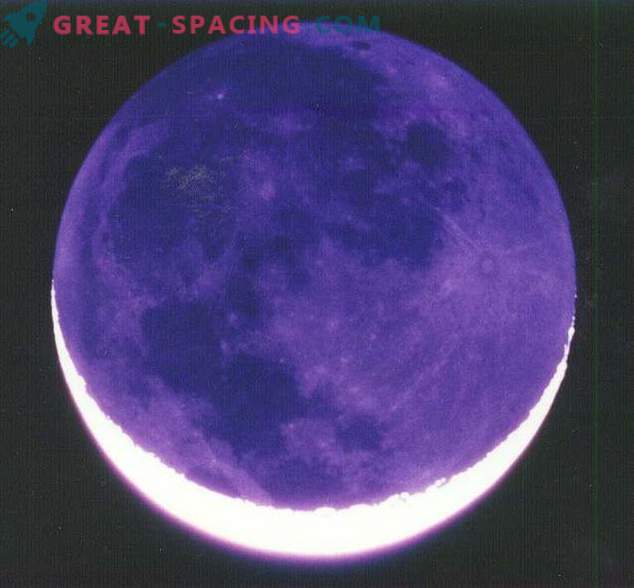
Earth lights
If satellites and spacecraft cannot measure the integrated earth spectrum, then how to get it? From earthly light. You know that the Moon changes its appearance. The bright part is illuminated by the sun, and the dark is located in the shade. But it still does not disappear completely, but emits a faint glow reflected from the Earth. This is the terrestrial radiance. If direct observation tracks light reflected from specific areas, then the entire globe displays the amalgam of light from half the earth's surface. Since we take one spectrum as a basis, the earth shining is an ideal representation of how our planet will be seen by a distant observer.
The hunt for the red edge
Scientists did not expect a breakthrough or some dizzying results. They used the 60-inch telescope of the Palomar Observatory and a high-precision spectrometer to record the spectrum of the Earth’s radiance on the night of November 19, 2003. At that time, they did not notice a significant increase in the signal, explaining the failure of the cloud layer. The fact is that the clouds have the properties to reflect and jam the signals of the green areas.
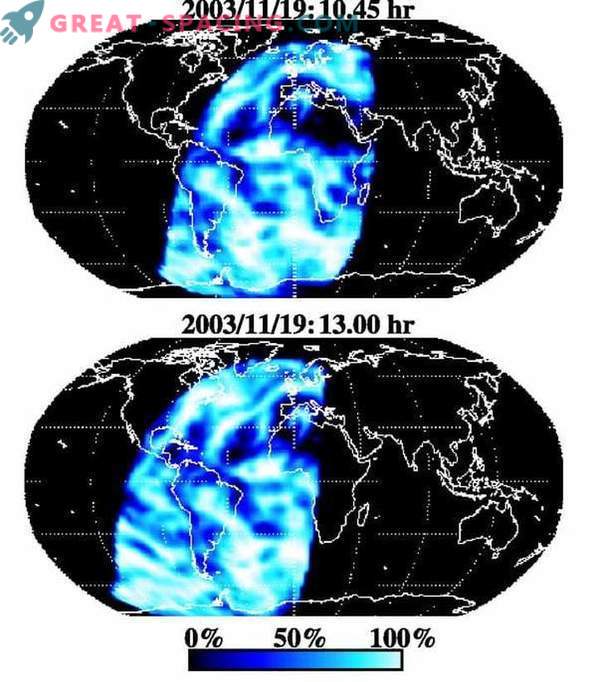
Earth regions displaying aurora at different times November 19, 2003
To confirm the hunch, Palle and Montanes-Rodriguez decided to compare the data with actual cloud coverage and green coverage. This helped create a computer model that combines reflected light from different regions. She accurately predicted the spectrum of the earth's surface.
This proved that they can demonstrate a spectrum any night if there is information about cloud cover. Having received such a powerful tool, scientists could consider the problem from the other side. The red edge was barely perceptible, but this does not mean that the method for searching for vegetation was useless. Maybe there are conditions under which the signal is noticeable better?
The first thing that comes to mind is to track in the night when the sky is clear. But here we will encounter an error. Clouds always cover about 60% of the surface. That is, its clouds will always be the same. What should be the perfect day to search?
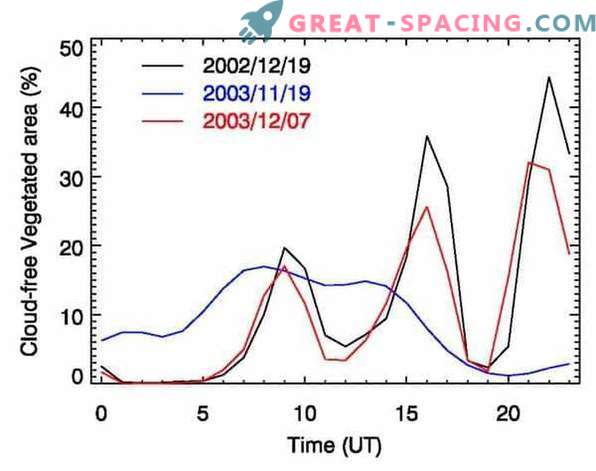
Three days of earthly light. Here are the percentages of earthly lights for areas of the planet that are both cloudy and covered with vegetation, taken on three different days. The blue line (November 19, 2003) - 40% of the surface was responsible for creating the shining, black and red (December 19, 2002 and December 7, 2003) - only a small interval was involved. Three peaks (from left to right): Asia, Africa and South America. To determine precisely, the scientists decided to model the Earth’s spectrum every day during 2003. It turned out that December 19, 2002 and December 7, 2003 showed a strong fluctuation of the red edge during the day. The signal appeared and disappeared three times. The researchers tracked time and realized that horse races appeared when the regions that contributed the most to the process included areas rich in vegetation. The instrument seemed to go crazy, trying to indicate the presence of life forms.
Why, then, was the signal on the first night weak? Here we must take into account that the size of the area involved in the process can change dramatically. When we observe the Moon, we see its changes (illumination by the Sun). If you were following the Earth from a satellite, you would have noted the same effect. Of course, only the bright areas help to create radiance. They can be incredibly narrow and weak, or they can cover half the planet when it is lit. It turns out that there were moments when our planet was “swarming” with life, and there were days of complete silence.
Let us not forget that light exposure may fall on zones with oceans, land or densely covered by clouds, therefore the effect is not always remarkable and radically different. It turns out that the red edge is simply absorbed by these factors.
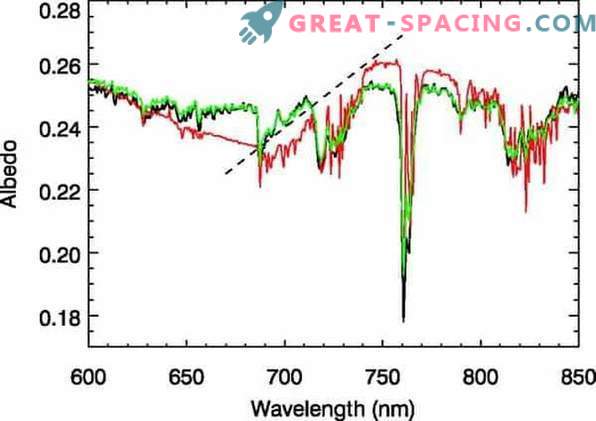
The spectrum of the Earth's radiance and the red edge The black line represents the spectrum on November 19, 2006. Green - computer simulation of the spectrum on the same day (it is clear that they converge). Red - model of spectral albedo on December 7, 2003. Red edge is shown by the slope of the line.
The researchers found a clue, namely a thin gap. Our planet rotates, so if a large percentage of the light is seen over America, reflected to the moon, it will be noted above the mainland, and not the ocean. That is, vegetation areas with a red edge signal should be easily located and will not overlap with the light of the desert. The same goes for the clouds. Cloud areas still contribute a certain amount of light. But, if the component is represented by a narrow gap, everything changes. This gap will occasionally be covered with clouds, but it will then still fall into a territory devoid of “interference” and pick up vegetation.
That is, we are sending a scanning beam to the rotating Earth. It will pass through all the green places, and we will receive signals from the red edge at certain times. But on the ground oceans and deserts, he will be silent. This is demonstrated with the dates of contact with Asia, Africa and South America.
But our planet is not the best example for research. After all, we are mostly covered with water, so you can use only a narrow strip for the search and wait for the area to meet the requirements.

Sections of the Earth's radiance (November 19 and December 7). On November 19 (left) most of the earth's disk shone upon observation and contributed its share of light, but on December 7 (right) only the gap was lit. In the first case, only 15% of the territory is covered with vegetation, and in the second - 48%.
To other planets
How does this help in searching on other planets? Well, from the very beginning it seems that nothing. In our case, we proceed from the characteristics of the Earth, the position of the Moon and the Sun. Future missions will need to look for reflection from a particular planet, not a hypothetical satellite. This will be a very complicated process, especially since our world is a unique case, since it is impossible to receive the reflection of light from a satellite in other objects.
But Montanes-Rodriguez does not agree with this. Exoplanets have phases that resemble what we see when looking at the moon. When the planet moves to the opposite side of the star, it seems complete. It also rotates, so it reaches the point where it is located closer to us. But she can hide behind a star, dismantling only the light strip. With the right choice of the day, you can scan the planet and find the red edge.
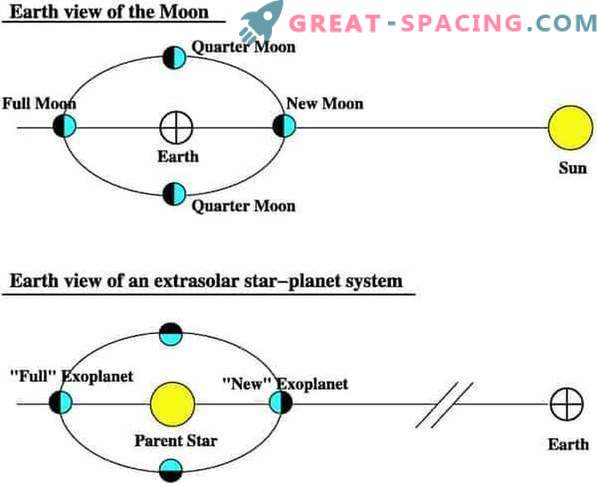
The Moon and Exoplanets We see that the Moon changes shape depending on the phases. This can be applied to other planets. It is necessary to look for the red edge when it is “new” and we see only a narrow strip.
As always, scientists offer us good news and bad. Let's start with the negative. To find the red edge in a distant planet, you need to look at it along a line close to the plane of its orbital path. If it is rejected, then we simply will not see the “phase”. But even under ideal conditions, we notice the edge at the moment of the planet’s weakness. This happens when it is located close to the star. But this causes difficulties, since it is necessary to isolate the light of the star itself. Therefore, you will need equipment that is 10 times more sensitive than modern.
But, there is good news. Red edge can be found if we know the exact location. Now we have no tools, but in the future this method will come in handy. And then we will realize that not only in the Universe and somewhere else there is vegetation, water, and possibly rational forms of life.



